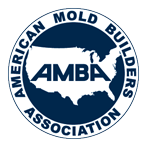By: Patrick Collins and Brent Borgerson
October 15, 2009
Like many thermoplastic resins, nylon has its quirks and accompanying processing considerations. One of nylon’s most notable characteristics is its affinity for water. Nylon is extremely hygroscopic, a veritable sponge, absorbing any humidity in its environment. It is an efficient sponge; quick to suck up water, and slow to give up the moisture.
Moist nylon resin affects the end product, often producing brittle or dimensionally unstable parts. Cosmetics are also affected; splay being one notable cosmetic defect that can be caused by moist resin. If the processed resin is out of moisture specs, it is essentially degraded. This is called hydrolytic degradation, and the effects and symptoms are akin to thermal degradation. Desired characteristics of many nylon parts include toughness and impact resistance. Parts produced with resin that has been sub-optimally dried can lack these traits. Moist nylon resin can be hard to process. Nylon has a tendency to drool from the nozzle. Good heat control at the nozzle is important for molding nylons successfully and controlling nozzle drool or freeze-off, but wet resin can make this control almost impossible to achieve. In addition to drying nylon well, it is important to dry nylon consistently. The same nylon resin dried at different moisture levels will exhibit different melt viscosities, even though the moisture levels may be within the manufacturer’s specifications. Water acts as a plasticizer; therefore wet nylon will fill more easily than dry nylon. This is reflected in peak fill (transfer) pressure and can be reflected in fill times, especially visible in a pressure limited process. For good consistent molding results, especially in a product with demanding dimensional specs, the resin moisture level should be consistent from run to run. If nylon is allowed to stay in the dryer for too long (over the recommended time), the material can start to degrade as well. Natural nylon may start to turn yellow. The finished part may also be very brittle. This is more common on nylons than most materials.
When inspecting nylon parts it is always good to allow the finished part to absorb the moisture in the air before you do your inspections. Depending on the environment this can take a few hours or more. Some nylon jobs require a fixed amount of moisture to be put into the poly bag that holds the parts. This is common in the processing of nylon straps. At Matrix Plastic Products, we strictly follow manufacturers’ recommendations for drying temperatures and times to ensure dryness, and we have a moisture analyzer to verify the results. We have found that good, consistent drying gives consistent molding results.
_horizontal_white_536x129.png)

